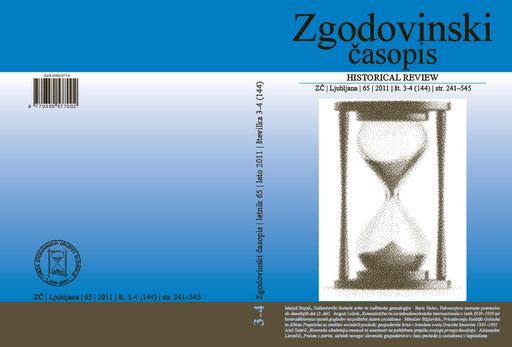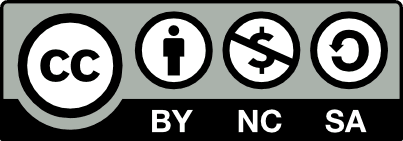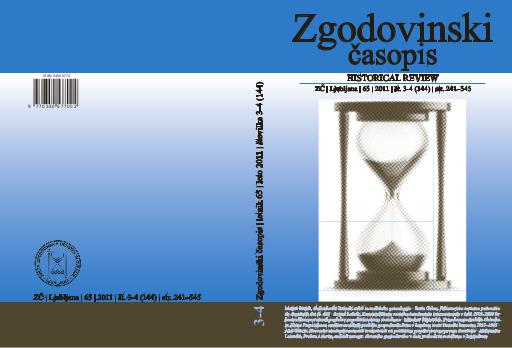/
Serijske publikacije
/
Zgodovinski časopis
Slovenska akademija znanosti in umetnosti na političnem prepihu svojega prvega desetletja

Avtor(ji):Aleš Gabrič
Soavtor(ji):Peter Štih (odg. ur.), Dušan Mlacović (ur.), Bojan Balkovec (teh. ur.), ives Sulič Dular (prev.), Niko Hudelja (prev.)
Leto:2011
Založnik(i):Zveza zgodovinskih društev Slovenije, Ljubljana
Jezik(i):slovenščina
Vrst(e) gradiva:besedilo
Ključne besede:Akademija znanosti in umetnosti, Slovenska akademija znanosti in umetnosti, člani, znanstvena politika, Academy of Sciences and Arts, Slovenian Academy of Sciences and Arts, members, scientific policy
Avtorske pravice:

To delo avtorja Aleš Gabrič je ponujeno pod Creative Commons Priznanje avtorstva-Nekomercialno-Deljenje pod enakimi pogoji 4.0 Mednarodna
Datoteke (1)

Ime:ZC_2011_3-4.pdf
Velikost:3.88MB
Format:application/pdf
Stalna povezava:https://hdl.handle.net/11686/file18353
Opis
Že v prvem desetletju po ustanovitvi leta 1938
se je Akademija znanosti in umetnosti v Ljubljani
znašla pod štirimi različnimi državnimi
oblastmi, ki so ocenjevale vlogo akademije
v skladu s svojimi politično-idejnimi načeli.
Glavni poudarek prispevka je na političnem
prelomu v letu 1945, ko so oblast prevzeli
komunisti.
Začela so se izključevanja članov
iz akademije, posnemanje znanstvene politike
Sovjetske zveze, po določilih zakona iz leta
1948 pa se je lahko oblast tudi legalno vpletala
v delovanje akademije.
Metapodatki (12)
- identifikatorhttps://hdl.handle.net/11686/35031
- naslov
- Slovenska akademija znanosti in umetnosti na političnem prepihu svojega prvega desetletja
- Slovenian Academy of Sciences and Arts during the Political Changes of the First Decade of Its Existence
- ustvarjalec
- Aleš Gabrič
- soavtor
- Peter Štih (odg. ur.)
- Dušan Mlacović (ur.)
- Bojan Balkovec (teh. ur.)
- ives Sulič Dular (prev.)
- Niko Hudelja (prev.)
- predmet
- Akademija znanosti in umetnosti
- Slovenska akademija znanosti in umetnosti
- člani
- znanstvena politika
- Academy of Sciences and Arts
- Slovenian Academy of Sciences and Arts
- members
- scientific policy
- opis
- Že v prvem desetletju po ustanovitvi leta 1938 se je Akademija znanosti in umetnosti v Ljubljani znašla pod štirimi različnimi državnimi oblastmi, ki so ocenjevale vlogo akademije v skladu s svojimi politično-idejnimi načeli. Glavni poudarek prispevka je na političnem prelomu v letu 1945, ko so oblast prevzeli komunisti. Začela so se izključevanja članov iz akademije, posnemanje znanstvene politike Sovjetske zveze, po določilih zakona iz leta 1948 pa se je lahko oblast tudi legalno vpletala v delovanje akademije.
- Established in 1938, the Slovenian Academy of Sciences and Arts in Ljubljana was confronted in the first decade of its existence with four different forms of government; each appraised the role of the Academy according to its own political agenda. The article focuses on the political break in 1945 when the Communists came into power. One of the consequences of this political change was that Academy members started to be expelled from the Academy. Its operations also increasingly imitated the scientific policy of the Soviet Union, and according to provisions from 1948 the authorities were allowed to legally influence the Academy’s operation and activities.
- After years of painstaking efforts of the most prominent Slovene intellectuals to establish a scientific and cultural institution of the highest rank, the Academy of Sciences and Arts in Ljubljana was finally established in 1938. In the first decade of its existence it was confronted with four different forms of government, each of which appraised the role of the Academy according to its own political agenda. The article explores the attitude of the authorities toward the Academy and their attempts to interfere with the institution’s operation. During the period of the so-called First Yugoslavia (1929-1945), the Academy was not allowed to include the adjective “Slovene” in its name, which was rectified in the period of the so-called Second Yugoslavia (1945-1992). During the Second World War, the Academy started to experience censorship and political pressure on its members. The article focuses on the political break of 1945 when the Communists came into power. Two members were expelled from the Academy, which was largely the result of autonomous decisions of the Academy. Starting to imitate the Soviet Union, their new role model, the new Communist authorities exerted pressure to copy the Soviet scientific policy as well. As a result, the new President of the Academy went on his first visit abroad to the Soviet Union, afterwards reporting on its organization of scientific work. Disagreement between the Academy and the authorities escalated during the preparation of the new Academy of Sciences and Arts Act. The resolution that the Academy be renamed the Slovenian academy of Sciences and Arts was one of the few major common points shared by both the Academy and the ruling authorities in reference to necessary changes. In May 1948 the Slovene Assembly passed the law which allowed for legal interference of the government with the Academy’s activities and decisions that had previously been autonomous, thus considerably hindering its operation. The government could, and did, oversee appointments of Academy members. As a result, two of its distinguished members were later expelled from the ranks of full members because they, each for a different reason, incurred displeasure of the authorities. Furthermore, leading state politicians and political ideologists were soon appointed full or honorary members. After its final dispute with the Soviet Union, the Yugoslav regime no longer faithfully imitated the Soviet scientific policy. However, it still controlled, although to a smaller degree than during the first years after the Second World War, the operation of cultural and scientific institutions by means of legislation. Like other similar institutions, the Academy had to reconcile itself to the fact that it operated in a country whose leadership did not recognize the autonomy of such institutions.
- založnik
- Zveza zgodovinskih društev Slovenije
- datum
- 2011
- tip
- besedilo
- jezik
- Slovenščina
- jeDelOd
- pravice
- licenca: ccByNcSa
